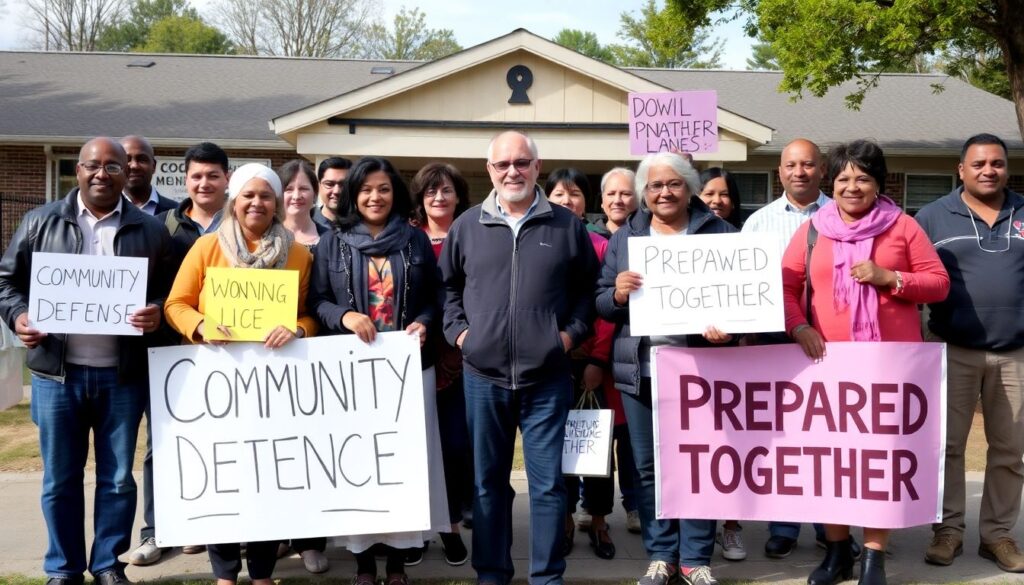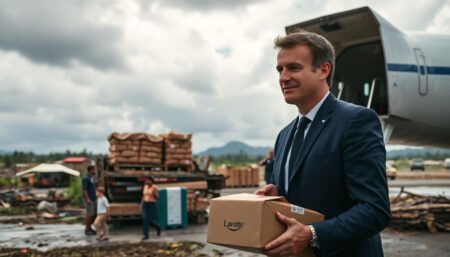In the face of escalating civil unrest and growing concerns about public safety, communities worldwide are turning to local organization and group preparedness to protect their neighborhoods. Have you ever wondered how your community can come together to ensure the safety and well-being of its residents during uncertain times? This article, ‘Creating a Neighborhood Watch for Civil Unrest’, aims to empower you with the knowledge and tools necessary to establish an effective community defense network. According to a recent study by the National Institute of Corrections, well-organized and trained neighborhood watch groups can lead to a 16% decrease in crime rates. However, the question remains: how can we translate this success into a model that also addresses civil unrest and maintains community resilience? This article promises to guide you through the process of creating a neighborhood watch group that is not only equipped to handle everyday crime but also prepared to face more complex challenges posed by civil unrest. Agreeably, the task may seem daunting, but with the right approach and resources, it is achievable. This article will provide you with a comprehensive overview of the steps involved in creating a neighborhood watch for civil unrest. From understanding the unique challenges posed by civil unrest to building a robust and inclusive community defense network, we will cover it all. By the end of this article, you will have a clear understanding of how to:
- Identify the specific needs and risks of your community
- Build a diverse and inclusive team of volunteers
- Develop a comprehensive plan for communication, training, and response
- Collaborate with local law enforcement and other emergency services
- Maintain community resilience and preparedness in the long term So, if you’re ready to take the first step towards creating a safer, more resilient community, read on. Together, we can turn the tide against civil unrest and ensure that our neighborhoods remain strong and united.
Strengthening Communities: Establishing a Neighborhood Watch for Civil Unrest
In the wake of increasing civil unrest and the importance of community resilience, establishing a Neighborhood Watch program can significantly strengthen communities and foster a sense of collective security. Neighborhood Watch, a crime prevention program that involves neighbors looking out for one another and reporting suspicious activities to local law enforcement, has proven to be an effective tool in enhancing community safety and cohesion. By organizing a Neighborhood Watch, residents can create a visible presence that deters criminal activity, fosters a sense of community pride, and promotes neighborly interaction. The program encourages residents to work together to maintain a safe environment, which can be particularly beneficial during times of civil unrest. Through regular meetings, block parties, and communication networks, Neighborhood Watch groups can stay informed about local issues, share resources, and develop a collective response to potential threats. Moreover, by maintaining open lines of communication with local law enforcement, these groups can ensure that their concerns are addressed and that they have the support they need to keep their communities safe. Establishing a Neighborhood Watch is not just about preventing crime; it’s about building a strong, resilient community that can withstand and recover from challenges, including civil unrest. It’s about neighbors coming together, looking out for one another, and creating a sense of belonging that transcends individual households. In essence, a Neighborhood Watch is not merely a crime prevention strategy; it’s a community-building initiative that can significantly enhance the quality of life for all residents.
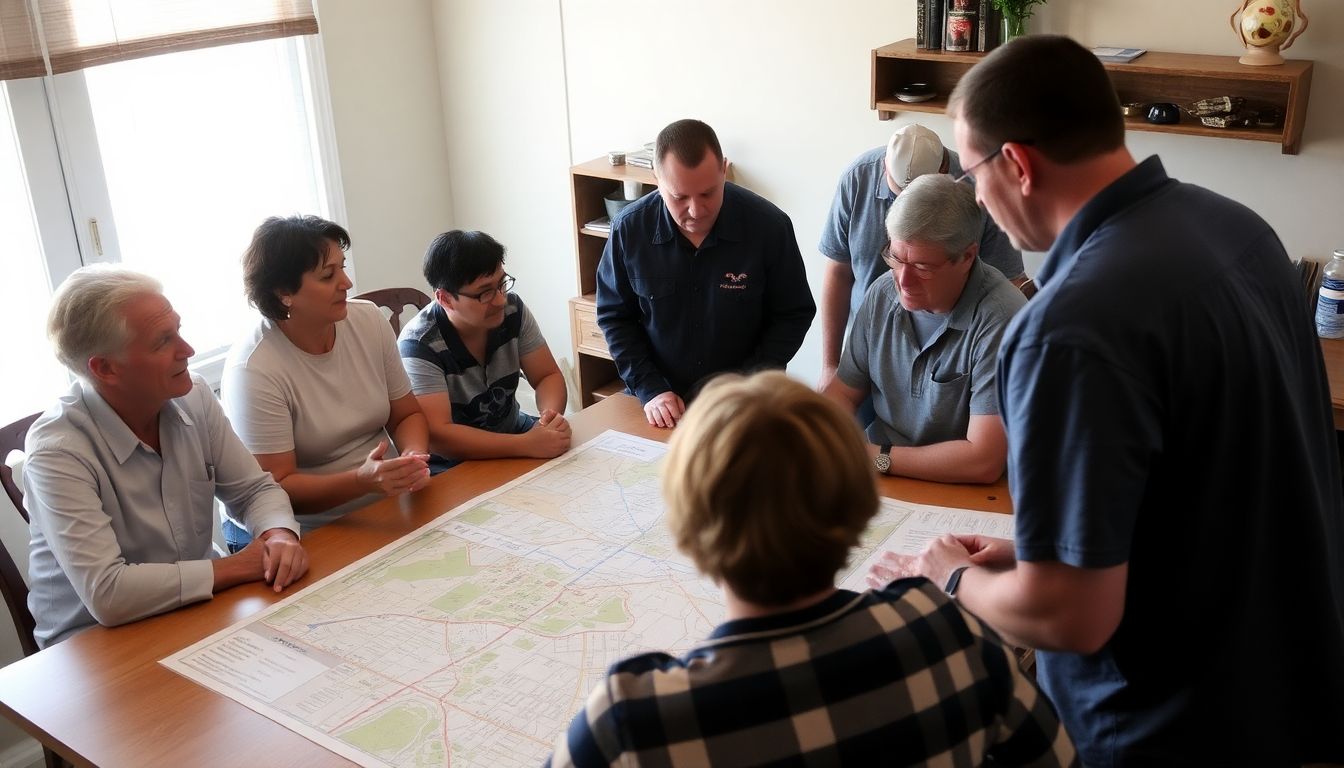
Understanding the Need for Community Defense
In the face of civil unrest, the importance of community defense cannot be overstated. When traditional security forces are overwhelmed or unable to maintain order, it falls upon the community to ensure the safety and security of its members. Community defense is not merely about protecting property; it is about preserving the social fabric, fostering a sense of collective responsibility, and ensuring that justice is served.
The neighborhood watch is a prime example of community defense in action. By organizing residents to keep an eye on their surroundings and report suspicious activities, neighborhood watches create a deterrent to crime and enhance overall security. They foster a sense of community, encouraging neighbors to look out for one another and strengthening social bonds. For instance, in the United States, the National Neighborhood Watch program has been credited with reducing crime in participating communities by up to 40%.
Successful community defense initiatives worldwide offer further testament to this power. In Kenya, the Nyumba Kumi (Swahili for ‘ten houses’) initiative encourages residents to form groups of ten households, each responsible for monitoring and maintaining the security of their neighborhood. This has significantly reduced crime rates in participating areas. Similarly, in Brazil, the Community Policing program has seen police officers working closely with communities to address local security concerns, leading to improved public trust and reduced crime.
Community defense is not without its challenges. It requires sustained effort, resources, and often, a delicate balance between maintaining security and respecting individual rights. However, when communities come together, they can create a powerful force for maintaining safety and security, even in the face of civil unrest. It is a testament to the human spirit and the power of collective action.
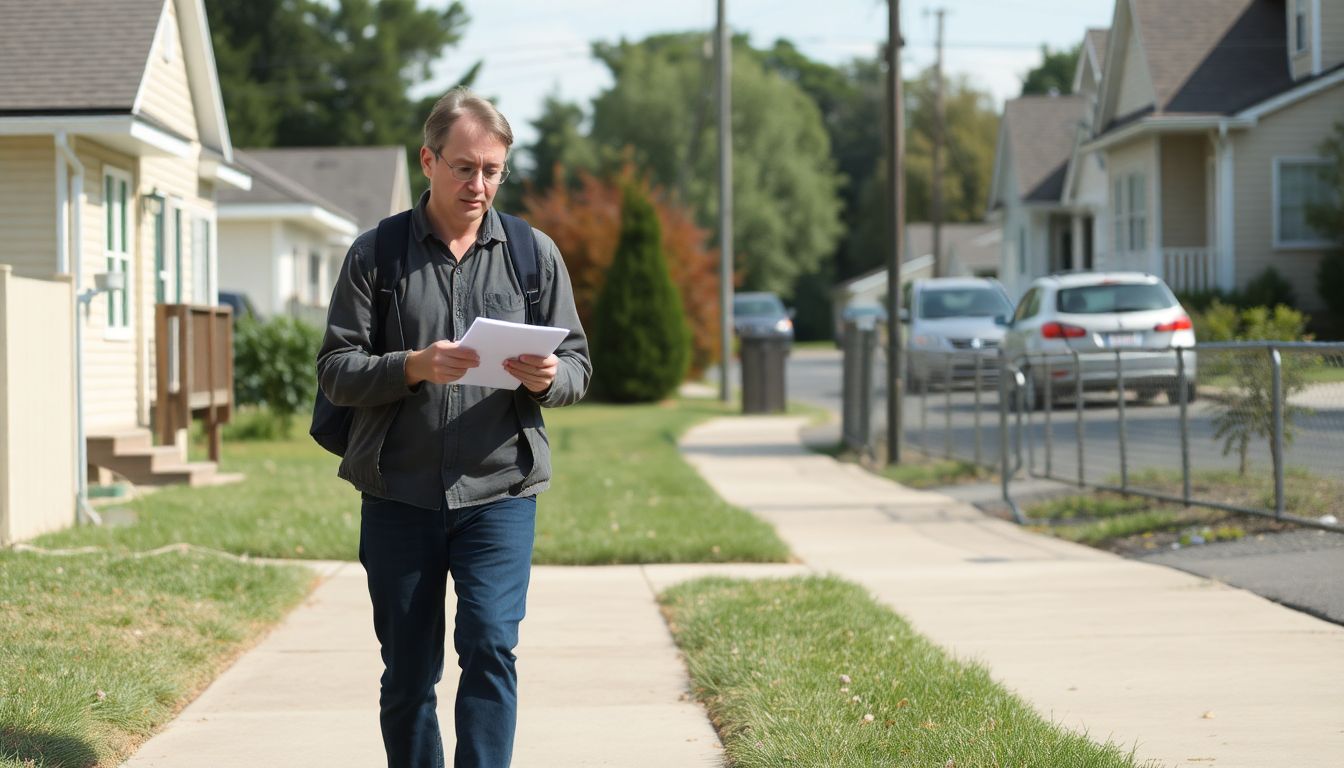
Assessing Your Neighborhood’s Vulnerabilities
Assessing Your Neighborhood’s Vulnerabilities
Understanding the potential risks and vulnerabilities in your neighborhood is a crucial step in ensuring the safety and resilience of your community. By conducting a thorough risk assessment, you can identify areas that may be prone to disasters, such as natural hazards, and plan accordingly to mitigate these risks.
To begin, it’s essential to know your community’s demographics. Understanding the age, income, and health status of your neighbors can help you identify those who may be particularly vulnerable during emergencies. For instance, elderly residents or those with disabilities may require special assistance during evacuations or power outages.
Next, evaluate your neighborhood’s infrastructure. Assess the condition of roads, bridges, and public transportation systems. Identify critical facilities like hospitals, fire stations, and police departments, and consider how they might be affected by different types of disasters. Also, examine the age and condition of your homes and other buildings. Older structures may be more susceptible to damage from earthquakes, high winds, or flooding.
Additionally, familiarize yourself with your neighborhood’s local resources. Know where the nearest emergency services are located, and identify community gathering points in case of evacuation. Understand what types of assistance your community may be eligible for in the event of a disaster, such as emergency food and water supplies or temporary shelter.
To conduct a thorough risk assessment, start by gathering information from reliable sources like your local emergency management agency, the Federal Emergency Management Agency (FEMA), and the U.S. Geological Survey (USGS). Use this information to create a map of your neighborhood, marking potential hazards, critical facilities, and evacuation routes. Then, conduct a walk-through of your neighborhood to verify the information and identify any additional risks. Finally, share your findings with your neighbors and local community leaders to discuss how to address these vulnerabilities and enhance your community’s resilience.

Building a Core Team: Local Organization
Building a robust and effective neighborhood watch program begins with establishing a strong core team. This team, typically consisting of a coordinator, block captains, and support members, plays a pivotal role in maintaining the safety and security of the community.
The coordinator is the backbone of the team, responsible for overseeing the entire operation. They serve as the primary point of contact between the neighborhood watch and local law enforcement, ensuring open lines of communication and facilitating the flow of crucial information. The coordinator also plays a key role in organizing meetings, training sessions, and community events, fostering a sense of unity and shared purpose among residents.
Block captains, on the other hand, act as the eyes and ears of the neighborhood watch at the local level. They are responsible for leading and coordinating the efforts of their respective blocks, ensuring that every household is represented and involved in the program. This includes recruiting new members, organizing block-specific activities, and maintaining a watchful presence in their assigned areas. Block captains also play a crucial role in disseminating information and updates from the coordinator to their fellow residents.
Support members, meanwhile, provide essential assistance to the coordinator and block captains. Their roles can be diverse, ranging from managing the neighborhood watch’s budget and logistics to coordinating with local businesses and community organizations. They may also assist in planning and executing community events, or provide specialized skills and knowledge that benefit the team’s overall efforts.
Building an effective core team involves several key steps. First, it’s important to cast a wide net when recruiting members, ensuring that the team reflects the diversity of the community it serves. This includes reaching out to residents from various backgrounds, ages, and walks of life. Next, it’s crucial to clearly define each role and responsibility, ensuring that everyone understands their part in the team’s mission. Regular training and communication are also vital, fostering a sense of unity and shared purpose among team members. Lastly, it’s important to encourage open dialogue and feedback, creating an environment where team members feel valued and empowered to contribute their ideas and insights.

Establishing Communication Channels
Effective communication is the lifeblood of a successful neighborhood watch, enabling residents to stay informed, connected, and proactive in maintaining community safety. In today’s digital age, numerous communication channels are available to facilitate this, each with its unique advantages. Let’s explore these methods and guide you through setting them up. Neighborhood Apps and Social Media Groups Platforms like Nextdoor, Neighborhood Bridge, or Facebook Groups offer dedicated spaces for neighborhood communication. They allow real-time updates, instant notifications, and foster a sense of community. To set up a group:
- For Nextdoor: Visit nextdoor.com, enter your address, and follow the prompts to create an account and join your neighborhood.
- For Facebook: Go to facebook.com/groups, click ‘Create’, select ‘Group’, and fill in the details. Invite neighbors by sharing the group link. Email Lists Email lists provide a reliable, low-tech alternative for those not comfortable with apps or social media. Google Groups is a popular choice. To create an email list:
- Go to groups.google.com, click ‘Create group’, and fill in the details.
- Invite neighbors by adding their email addresses or sharing the group’s email address. Phone Trees Phone trees are traditional communication networks where each person calls a few others to spread information. To set up a phone tree:
- Divide your neighborhood into sections, with each section having a point person.
- Each point person calls a few others in their section when there’s an update.
- To ensure everyone is reached, use a daisy chain approach, where each person calls a set number of others. Combining Channels A combination of these methods can ensure everyone is reached, regardless of their preferred communication method. For instance, you might use Nextdoor for real-time updates, email for official announcements, and phone trees for urgent matters. Regularly remind neighbors to update their contact information and encourage everyone to participate. Effective communication is a shared responsibility that strengthens the neighborhood watch and enhances community safety.
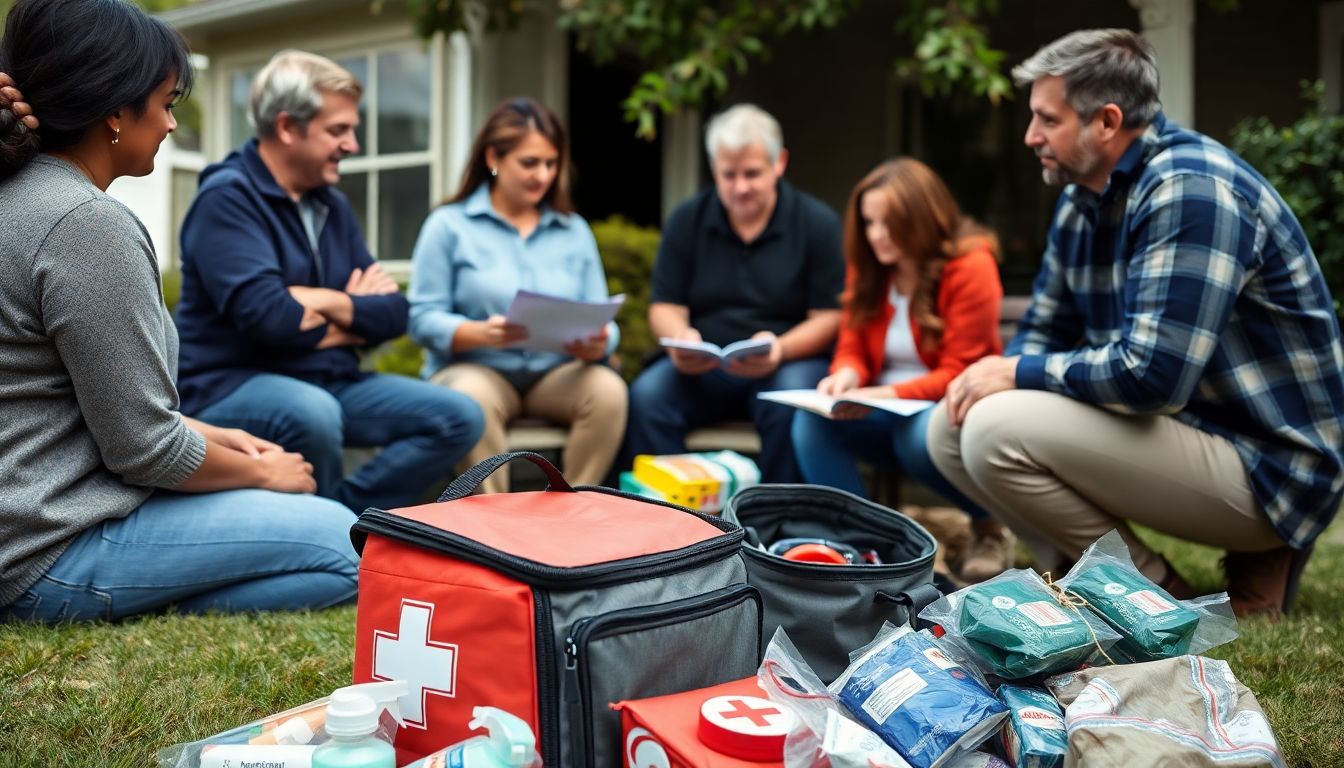
Developing a Community Emergency Plan
Creating a comprehensive community emergency plan is not only a proactive measure but a crucial responsibility that ensures the safety and well-being of all residents. Emergencies can strike at any time, ranging from natural disasters like power outages or wildfires to man-made crises such as civil unrest or chemical spills. Having a well-thought-out plan in place can significantly reduce the impact of these events and even save lives.
Developing a community emergency plan involves several key steps. Firstly, it’s essential to identify potential hazards that your community might face. This could involve researching past events, consulting with local emergency services, or even conducting community surveys. Once you’ve identified these hazards, you can begin to develop response strategies tailored to each scenario.
Involving local emergency services in this planning process is not just recommended, but vital. They possess invaluable expertise and resources that can greatly enhance your plan’s effectiveness. Reach out to your local fire department, police station, and emergency medical services. They can provide guidance on evacuation routes, safety protocols, and community-specific response strategies. Moreover, they can help ensure that your plan aligns with their own emergency response procedures.
It’s also crucial to engage the community in this process. Hold public meetings to discuss the plan, gather feedback, and ensure everyone understands their role in an emergency. This could include setting up neighborhood watch groups, establishing communication networks, or designating safe meeting points. By fostering a sense of community responsibility, you can create a robust and resilient emergency plan that truly reflects the needs and capabilities of your community.
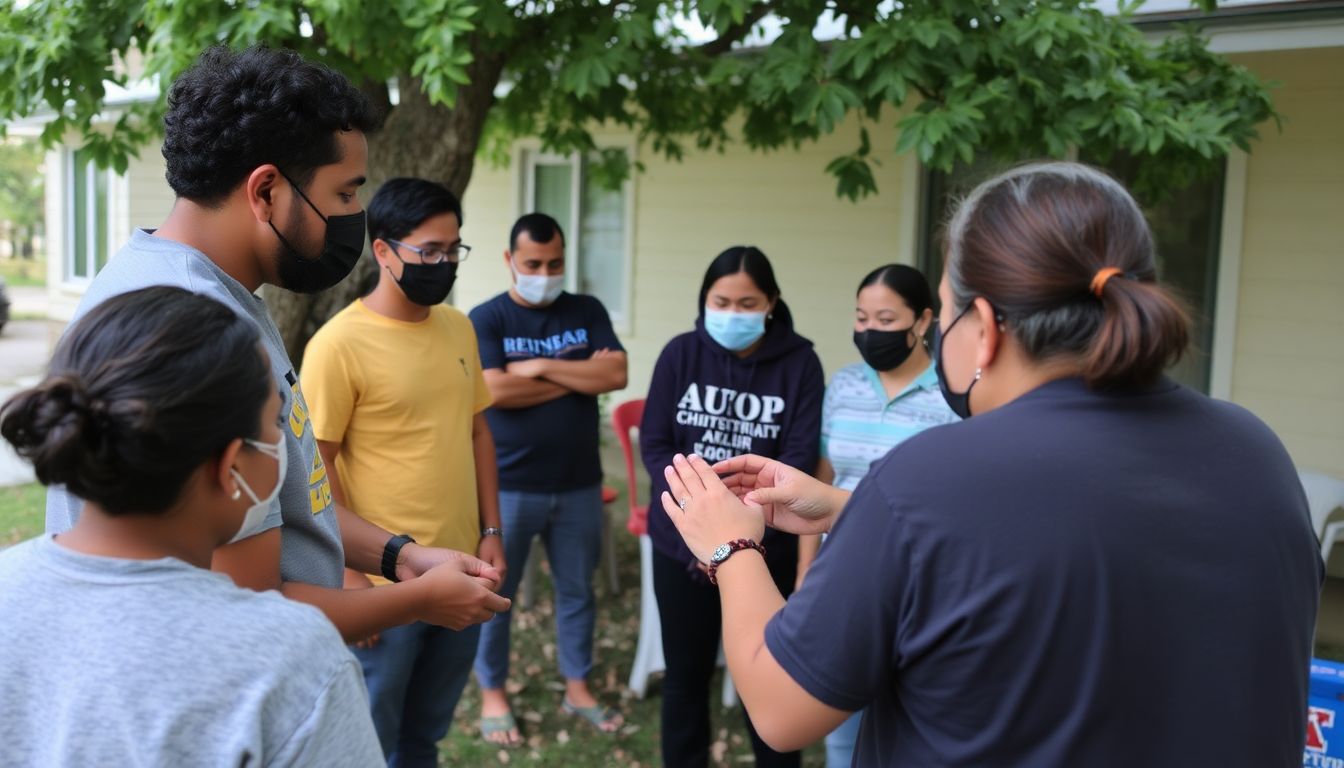
Group Preparedness: Training and Education
Group preparedness is a critical aspect of ensuring the safety and well-being of communities, especially in the face of emergencies or disasters. A well-prepared group is not only more resilient but also better equipped to respond effectively and efficiently when faced with unexpected challenges. Training and education play a pivotal role in achieving this level of preparedness. They empower individuals with the knowledge and skills necessary to protect themselves and others, fostering a sense of collective responsibility and enhancing overall group cohesion.
Training and education in group preparedness encompass a wide range of subjects, each serving a unique purpose in disaster management. One of the most fundamental aspects is first aid training. This equips individuals with the ability to provide immediate care to injured or ill persons, potentially saving lives and reducing the severity of injuries. First aid training covers a broad spectrum of skills, from basic wound care and CPR to managing more complex situations like shock, fractures, and burns.
Self-defense training is another crucial component of group preparedness. It enables individuals to protect themselves and others from physical harm, which can be particularly important in situations where evacuation is not possible or during post-disaster looting. Self-defense training typically involves teaching techniques to defend against various types of attacks, as well as strategies for avoiding dangerous situations.
Emergency response training is also vital. This includes learning how to respond to specific types of emergencies, such as fires, floods, or chemical spills. It also involves understanding and practicing evacuation procedures, shelter-in-place strategies, and the use of emergency equipment. Additionally, emergency response training often includes instruction on how to assist others, including those with special needs.
Organizing and conducting these training sessions requires careful planning and consideration. It’s essential to identify the specific needs and capabilities of the group, then tailor the training to address these areas. For instance, if the group includes individuals with disabilities, the training should ensure accessibility and provide appropriate accommodations. It’s also crucial to involve the entire group in the planning process, fostering a sense of ownership and commitment to the training.
When conducting the training sessions, it’s important to create a safe, inclusive, and engaging learning environment. This can be achieved by using a variety of teaching methods, such as lectures, demonstrations, role-playing, and hands-on exercises. It’s also beneficial to invite guest speakers, like professionals from local emergency services, to share their expertise and experiences. Regularly reviewing and updating the training content is also vital to ensure its relevance and effectiveness.
In conclusion, training and education are indispensable components of group preparedness. They provide individuals with the skills and knowledge needed to respond effectively to emergencies, fostering a sense of collective responsibility and enhancing overall group cohesion. By organizing and conducting comprehensive, tailored training sessions, groups can significantly improve their preparedness and resilience, ensuring they are ready to face whatever challenges may come their way.
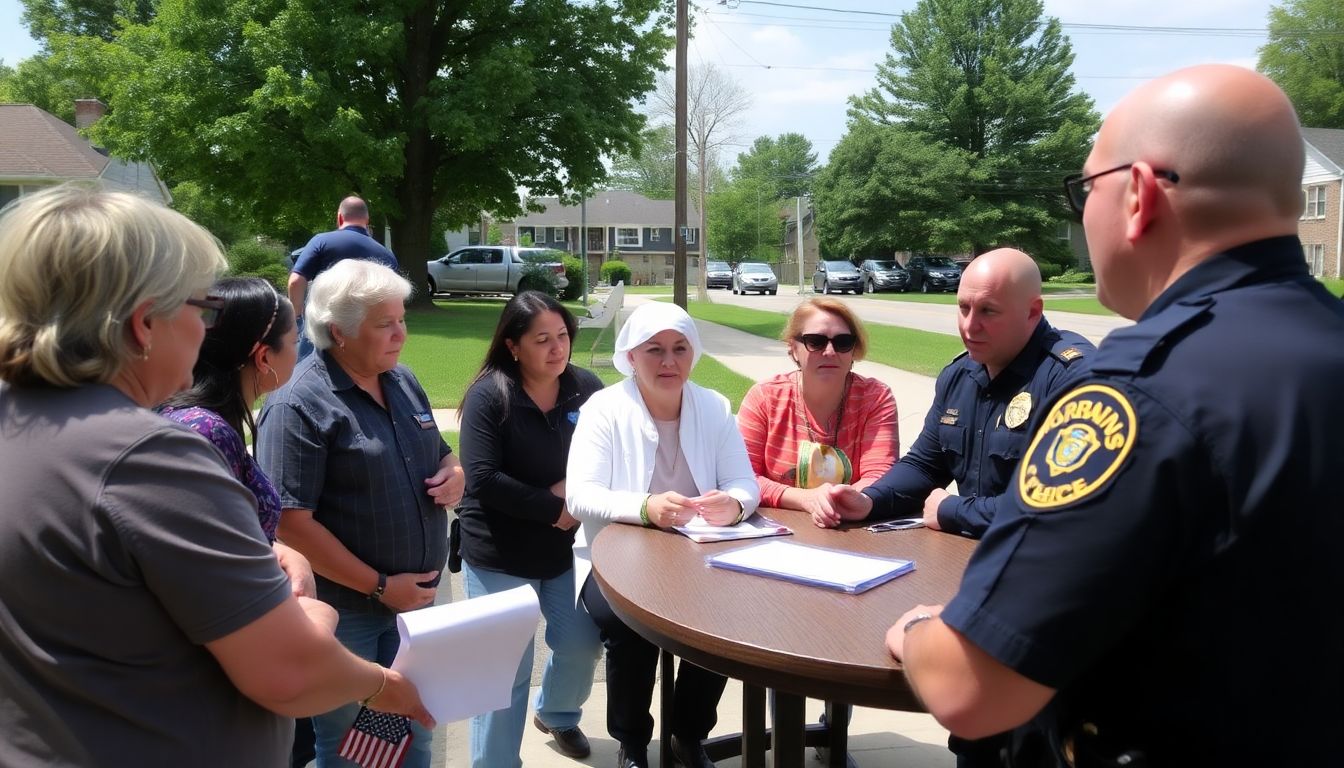
Partnering with Local Authorities and Organizations
Partnering with local authorities and organizations can significantly enhance a community’s safety, resilience, and overall well-being. These collaborations foster a sense of shared responsibility and collective effort, enabling stakeholders to leverage each other’s strengths and resources to address common challenges more effectively.
Building relationships with local police, fire departments, and community organizations is a crucial first step. Regular communication, open dialogue, and mutual respect are key to establishing and maintaining these partnerships. For instance, the ‘Neighborhood Watch’ program in the United States is a testament to successful collaboration between local authorities and communities. By working together, they create a network of vigilant neighbors who help prevent crime and maintain safe neighborhoods.
Local police and fire departments can provide valuable expertise and resources. They can offer training in emergency response, crime prevention, and safety protocols. For example, the ‘Firewise USA’ program in the United States encourages local communities to work with their fire departments to reduce wildfire risks. By partnering, communities gain access to fire safety education, resources, and recognition.
Community organizations, such as non-profits and local businesses, can bring unique perspectives and resources to the table. They can help address social issues, provide support services, and even contribute financially to community initiatives. A prime example is the ‘Business Improvement District’ model, where local businesses partner with authorities to improve their neighborhoods. This collaboration often leads to enhanced security, cleaner streets, and improved local economies.
To build these partnerships, it’s essential to identify shared goals and priorities. Regular meetings, joint planning sessions, and public events can help foster a sense of common purpose. It’s also crucial to recognize and celebrate successes, no matter how small, to maintain momentum and enthusiasm. By working together, local authorities and organizations can create stronger, safer, and more resilient communities.
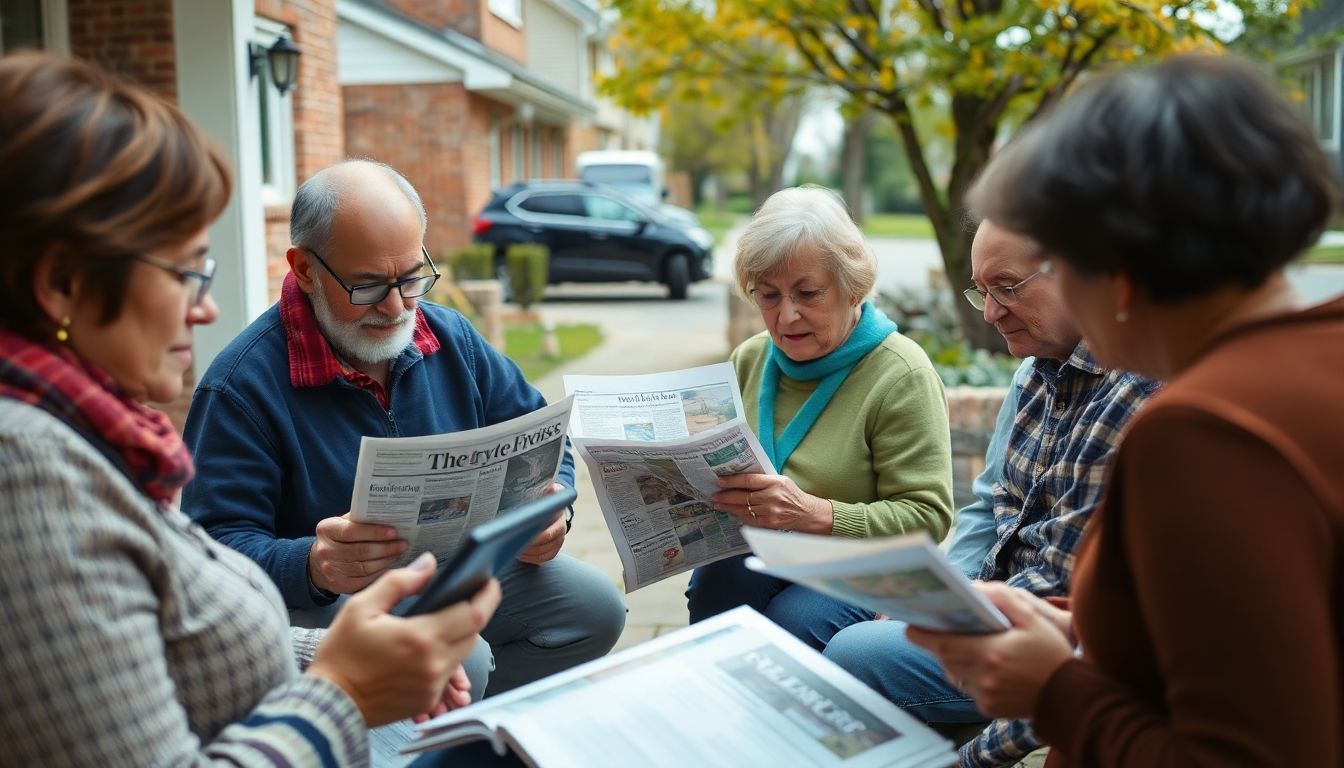
Maintaining Vigilance and Adaptability
Maintaining vigilance and adaptability is not just a recommendation, but a necessity for an effective neighborhood watch. The primary goal is to ensure the safety and security of the community, which is an ongoing process that doesn’t pause when immediate threats seem to subside. Consistency in engagement and information is key to keeping the community alert and prepared.
To maintain vigilance, regular communication is paramount. This can be achieved through neighborhood newsletters, email updates, or social media groups dedicated to the watch. Sharing crime statistics, safety tips, and community events not only keeps residents informed but also fosters a sense of collective responsibility. It’s also crucial to encourage residents to report any suspicious activities, no matter how small they may seem. This can be facilitated by providing clear guidelines on what to look out for and how to report.
Adaptability is another vital aspect. Neighborhoods are dynamic, with new residents moving in, businesses opening or closing, and crime patterns shifting. Therefore, the neighborhood watch must be flexible and responsive to these changes. Regular meetings can provide a platform for discussing these changes and adjusting strategies accordingly. For instance, if a new business opens, the watch might need to focus more on after-hours surveillance. If a new resident moves in, a welcome package with safety information could be provided.
Moreover, adaptability also means being open to new technologies and methods. This could range from using apps for community communication to installing smart cameras for better surveillance. It’s also important to ensure that the watch is inclusive and represents the diverse needs and perspectives of the community.
In conclusion, maintaining vigilance and adaptability in a neighborhood watch is not just about reacting to immediate threats, but also about proactively engaging the community and staying responsive to its changing needs. This ongoing effort not only enhances the community’s safety but also fosters a sense of unity and resilience.

Legal Considerations and Liability
Neighborhood watches, while intended to enhance community safety, come with legal considerations and potential liability issues that organizers and participants should be aware of. Firstly, it’s crucial to understand local laws and regulations regarding neighborhood watches. Some cities may require permits or have specific guidelines for such groups. Failing to comply with these regulations could result in fines or even the dissolution of the watch group.
Liability is a significant concern in neighborhood watches. If a volunteer causes harm to a person or property while on duty, the volunteer and the watch group could potentially be held liable. This is where understanding local laws comes into play. Some jurisdictions provide volunteers with legal protection, known as ‘Good Samaritan’ laws, but these vary by location and have specific conditions.
To minimize liability risks, neighborhood watch groups should consider the following tips. Firstly, ensure all volunteers are properly trained. This includes understanding their role, the limits of their authority, and how to handle various situations. Secondly, obtain necessary insurance coverage. This can help protect the group and its members from financial losses in case of a lawsuit. Lastly, maintain detailed records of all activities, including training sessions, meetings, and incidents. These records can be invaluable if a legal dispute arises.
In conclusion, while neighborhood watches can play a vital role in community safety, it’s essential to navigate the legal landscape carefully. Understanding local laws, obtaining necessary permits, and implementing risk management strategies can help ensure that these groups operate effectively and safely.
FAQ
What is a Neighborhood Watch and how does it relate to community defense?
How do I start a Neighborhood Watch group in my community?
- assemble a small group of interested neighbors
- contact your local law enforcement agency to learn about their Neighborhood Watch program and obtain materials
- organize a meeting with your neighbors to discuss the need for a watch group and elect block captains
- establish a communication plan to keep everyone informed
- create a plan for regular meetings and activities
What kind of training should our Neighborhood Watch group consider?
- Crime prevention techniques and home security
- Emergency first aid and CPR
- Self-defense and de-escalation techniques
- Emergency communication and response protocols
- Community emergency response team (CERT) training, which covers topics like fire safety, light search and rescue, and team organization
How can we prepare our neighborhood for potential civil unrest?
- Stay informed about local events and potential threats
- Develop a neighborhood emergency plan, including evacuation routes, meeting points, and communication methods
- Establish a neighborhood supply cache with essential items like food, water, first aid supplies, and communication devices
- Strengthen neighborhood bonds through regular meetings and activities to foster a sense of community and mutual support
- Consider forming a neighborhood disaster response team to coordinate efforts during emergencies
What role should local law enforcement play in our Neighborhood Watch group?
- establish a positive relationship with your local law enforcement agency
- invite them to Neighborhood Watch meetings and events
- coordinate with them on neighborhood safety initiatives
- report any suspicious activities or crimes to them
- work together to address any concerns or issues in the neighborhood
How can we ensure our Neighborhood Watch group remains active and engaged?
- Schedule regular meetings and activities to keep members involved and informed
- Encourage members to take on roles and responsibilities to share the workload
- Recognize and reward members’ contributions to maintain morale and motivation
- Regularly assess and update your neighborhood emergency plan to ensure it remains relevant and effective
- Partner with other local organizations and community groups to expand your reach and impact
What should we do if our Neighborhood Watch group faces opposition or resistance from some neighbors?
- Listen to their concerns and try to address them openly and honestly
- Invite them to join the group and contribute their ideas and perspectives
- Educate them about the benefits of a Neighborhood Watch group for the entire community
- Consider forming a subcommittee to address their specific concerns or create a separate group for those who prefer a different approach
- If necessary, seek mediation or assistance from local community leaders or law enforcement
How can we ensure our Neighborhood Watch group remains inclusive and represents the diversity of our community?
- actively reach out to neighbors from different backgrounds, ages, and abilities
- hold meetings and events at different times and locations to accommodate various schedules
- encourage and support members from diverse backgrounds to take on leadership roles
- create a welcoming and inclusive environment that respects and values everyone’s contributions
- regularly assess and address any barriers to participation or representation
What should we do if our Neighborhood Watch group faces a legal or liability issue?
- Contact your local law enforcement agency or a legal professional experienced in community organizations
- Review your group’s bylaws, insurance policies, and any applicable laws or regulations
- Document all relevant communications, decisions, and actions taken by the group
- Consider obtaining liability insurance to protect your group and its members
- If necessary, consult with a legal professional to understand your rights and obligations



